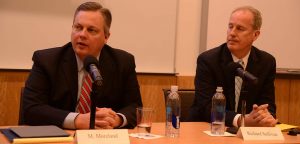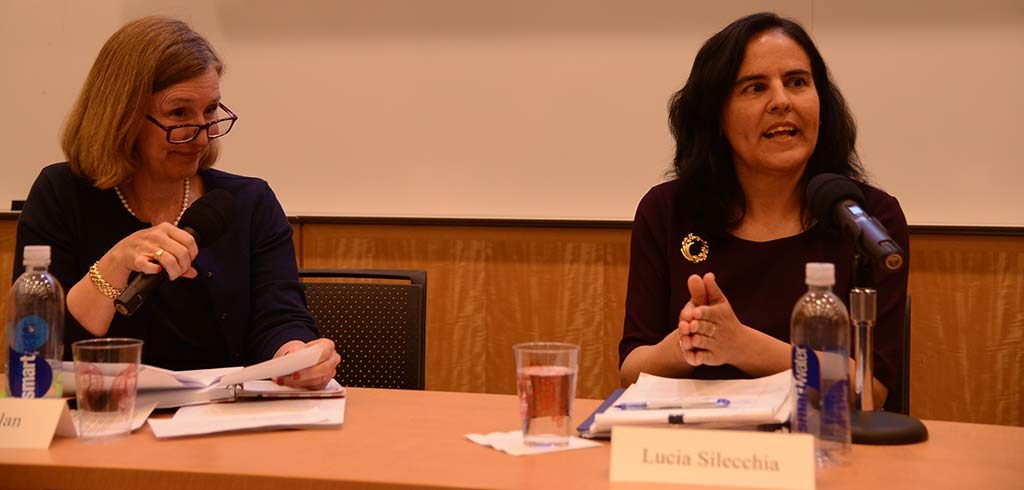Catholic lawyers can learn a lot from Pope Francis.
That was the consensus of an April 29th panel on “Pope Francis and the Vocation of the Lawyer,” held at Fordham Law School and co-sponsored by the school’s Institute on Religion, Law & Lawyer’s Work. Panelists included Lucia Silecchia, professor of law at the Columbus School Of Law at Catholic University of America; Michael P. Moreland, vice dean and professor of law at Villanova University School of Law, and; Richard J. Sullivan, United States District Judge, Southern District of New York.
Silecchia said that Pope Francis sees both promise and peril in the law.
“When he discusses law throughout his writings, there seems to be a powerful ambivalence—best analogized to the ambivalence that we might have to fire and water,” she said. “Both of these are highly beneficial and necessary to the existence of life itself, but when misused, [they]can be two of the most destructive and deadly forces that we know.”
Francis has cited, for instance, the ancient legislation regarding lepers that dictated that they be kept apart from the community. Given the lack of knowledge about leprosy and the horrors of the disease, it was an understandable law at the time.
And yet, Silecchia said Francis criticizes those who would follow the law and remove the danger by casting out the person. When Jesus goes to the leper and cures him, he is not disrespecting the law, but showing value for those to whom God gave the law.
“In this way, the pope urges us not to reflect on the intention of the law … but its impact in concrete situations,” she said.

Photo by Patrick Verel
Moreland focused on the pope’s background, and how it shapes his ideas: Argentinian, Jesuit, spiritual director, taker of the name Francis, and post-Vatican.
He showed slides of three of Francis’ favorite paintings, including Mary, Untier of Knots by Johann Georg Melchior Schmidtner, which hangs in the Jesuit residence in Cordoba, Argentina. The painting features sinners handing up their knots to the blessed mother, who is untying them; it is one that the pope has spoken of reverently.
“I think this would make a great painting for a lot of lawyers’ offices. I like that idea of lawyers as untier of knots [and that]Francis thinks that all of the work of the church is to untie these knots, while under Mary’s protection,” he said.
Sullivan he was intrigued to hear that Pope Francis prays to St. Thomas More, the patron saint of lawyers. He said More is also an excellent role model for lawyers and judges. In addition to being a martyr who was beheaded by King Henry VIII, Sullivan said, More was a man of the world who served as the lord chancellor of England.
As a judge, Sullivan said he has to be very much in the world when he has to impose harsh sentences. When he does, he tries to remind defendants that even in jail they can be sources of charity, goodness and kindness.
“In this, I feel a great solidarity with Pope Francis,” he said, citing Francis’ writing that ‘The mercy of God is his loving concern for each one of us … this is the path which the merciful love of Christians must also travel.’
“This is Pope Francis at his best. Mercy is not opposed to justice, but rather expresses God’s way of reaching out the sinner [and]offering him a new way to look at himself.”
The panel was moderated by Susan Whelan, delegate and legal expert at the Permanent Observer Mission of the Holy See to the United Nations and was co-sponsored by the Guild of Catholic Lawyers of the Archdiocese of New York, and the Catholic Lawyers Guild of Brooklyn.

